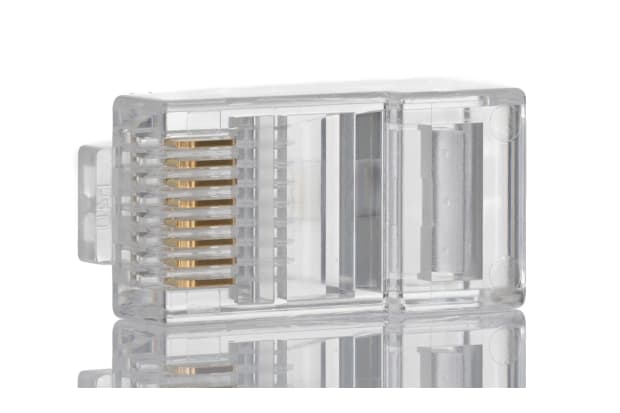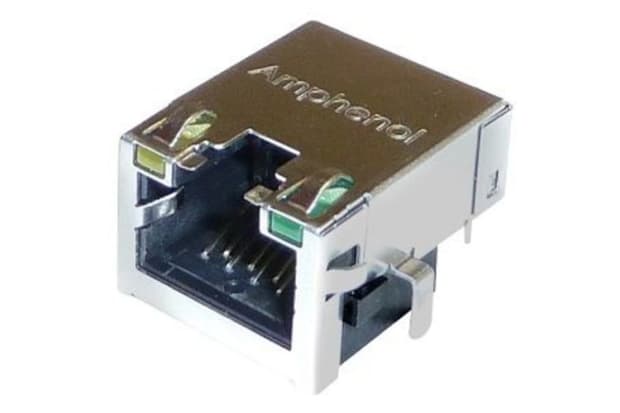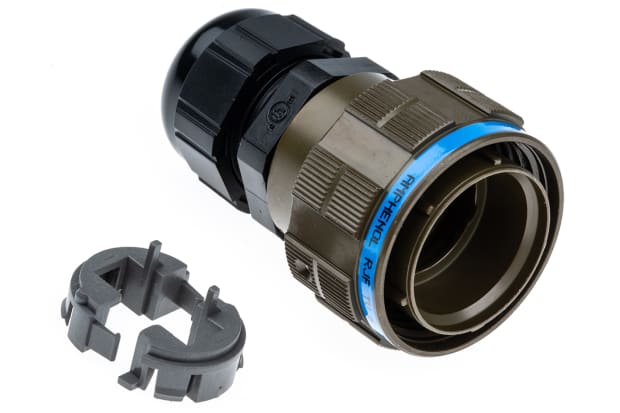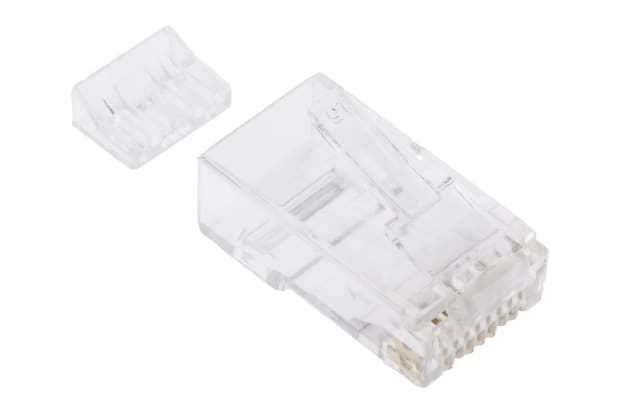- Published 9 Apr 2024
- Last Modified 9 Apr 2024
- 5 min
A Guide to RJ45 Connectors in New Zealand
Find out more about RJ45 connectors and how to wire them in our comprehensive guide.

In this guide, we will explore the world of RJ45 connectors, commonly used in networking and internet connections. We’ll cover what RJ45 connectors are, their role in networking, and the different types of RJ45 connectors available in New Zealand.
What is an RJ45 Connector?

RJ45 connectors are a common sight in the world of networking and internet connectivity. They are the primary means of establishing a wired connection between devices, such as computers, routers, and switches. The “RJ” in RJ45 stands for “Registered Jack,” a term used to describe standardized telecommunications network interfaces.
RJ45 connectors are typically used with Ethernet cables, and they play a crucial role in ensuring a secure and reliable connection for data transfer. These connectors are often found at both ends of an Ethernet cable and are used to link devices to a local area network (LAN) or the internet.
Types of RJ45 Connectors
RJ45 connectors come in various types, each designed for specific applications and use cases. The most common types of RJ45 connectors include male RJ45 plugs, female RJ45 jacks, and field RJ45 connectors.
Male RJ45 Plugs
Male RJ45 plugs are the most commonly used type of RJ45 connector. They are typically found at the end of Ethernet cables and are responsible for establishing a connection with a female RJ45 jack. Male RJ45 plugs are straightforward to use and are essential for terminating Ethernet cables.
When purchasing male RJ45 plugs, you’ll find that they come in various colours and materials. While the colour and material do not affect the functionality of the plug, they can be useful for organising and identifying different types of connections in your network.
Female RJ45 Jacks
Female RJ45 jacks are the counterparts to male RJ45 plugs. These connectors are typically found on networking equipment such as routers, switches, and wall outlets. Female RJ45 jacks are designed to accept male RJ45 plugs, creating a secure and reliable connection.
In New Zealand, you’ll commonly find female RJ45 jacks installed in wall plates, allowing you to connect your devices to the network without the need for additional adapters or connectors. They are also used in patch panels and other networking equipment to facilitate cable management and organisation.
Field RJ45 Connectors
Field RJ45 connectors, also known as industrial RJ45 connectors, are a more rugged and durable version of the standard RJ45 connector. They are designed to withstand harsh environmental conditions, making them ideal for outdoor or industrial applications.
Field RJ45 connectors often feature enhanced protection against dust, water, and mechanical stress, ensuring that your network connections remain reliable in challenging environments. In New Zealand, you may encounter field RJ45 connectors in outdoor installations, industrial settings, or any other location where standard connectors may be exposed to the elements.
Field RJ45 connectors are typically used in conjunction with Ethernet cables that have been specifically designed for outdoor or industrial use. These cables often feature additional shielding and protective measures to further enhance their durability.
RJ45 Pin Assignment and Wiring
One of the most critical aspects of working with RJ45 connectors is understanding pin assignments and wiring. Both male and female RJ45 connectors have a specific pin configuration that must be followed to ensure a proper connection.
RJ45 connectors use an 8P8C (8 position, 8 contact) configuration, meaning there are eight pins or contacts within the connector. When terminating an Ethernet cable with an RJ45 connector, you must carefully arrange the individual wires within the cable to match the correct pin assignment for the specific type of connector you are using.
The most common wiring standards for RJ45 connectors are T568A and T568B. These standards define the order in which the individual wires within the Ethernet cable should be connected to the pins of the RJ45 connector. Both standards use a colour-coded system to simplify the wiring process.
T568A and T568B differ only in the arrangement of the green and orange wire pairs. T568A is often preferred due to its wider compatibility, but T568B is more commonly used in practice. It’s essential to be aware of the standard you are using to ensure consistency in your network installations.
Wiring an RJ45 connector requires careful attention to detail, as any mistakes in the pin assignment can result in a faulty connection. Specialised tools, such as crimping tools and cable testers, are often used to ensure that the wiring is done correctly and that the RJ45 connector is properly terminated.
RJ45 Cables
RJ45 cables, also known as Ethernet cables, are the primary means of connecting devices in a wired network. These cables use RJ45 connectors at each end to establish a secure and reliable connection. RJ45 cables come in various types, each suited for different applications and performance requirements.
The most common types of RJ45 cables include:
- Straight-Through or Patch Cables: These cables have the same wiring configuration at both ends and are the standard choice for most networking scenarios. They are often used to connect devices to a network switch, router, or wall outlet.
- Crossover Cables: Unlike straight-through cables, crossover cables have different wiring configurations at each end. They are typically used to connect two similar devices directly, such as two computers or two switches, without the need for an intermediary device.
RJ45 cables are further categorised based on their performance and specifications. The most widely used categories of RJ45 cables include Cat5e, Cat6, and Cat6a, with each category offering different levels of performance in terms of data transfer speeds and signal integrity.
In New Zealand, you’ll find a wide selection of RJ45 cables available, allowing you to choose the right type and category based on your specific networking needs. Whether you require standard patch cables for everyday use or more specialised cables for demanding applications, you’ll have no trouble finding the right RJ45 cables for your projects.
Popular Brands
Browse related products from Amphenol
Browse related products from Amphenol Socapex
Related links
- Ethernet Connectors
- Ethernet Cable
- Ethernet Couplers
- Schneider Electric Cable for Use with D-Sub Connector, RJ45 Connector
- Cable plug housing RJ 45
- TE Connectivity Plug RJ45 Connector Cat5e Straight 1 Port 8 -Way
- TE Connectivity 2362760 Series Plug RJ45 Connector Cat5e 1 Port
- HARTING RJ Industrial Series Female RJ45 Connector Cat5 Angled 4P4C -Way


